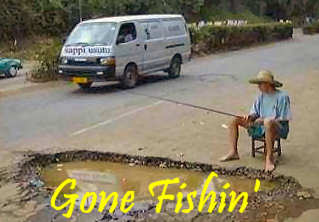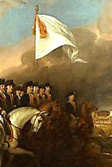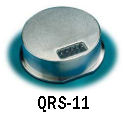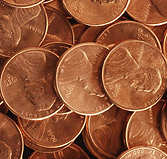
Regular posting resumes on July 9.
 Posted by Clif Burns at 1:31 pm on July 5, 2007
Posted by Clif Burns at 1:31 pm on July 5, 2007 Category: General
Category: General

Regular posting resumes on July 9.
 Permalink
Permalink  Comments (2)
Comments (2)  Posted by Clif Burns at 7:36 pm on April 12, 2007
Posted by Clif Burns at 7:36 pm on April 12, 2007 Category: General
Category: General
 Yesterday the U.S. Attorney’s office prosecuting the export case against Chi Mak came to it’s senses and reversed the position it had taken on exports of public domain data to China. Josh Gerstein has the details in his excellent article in the New York Sun.
Yesterday the U.S. Attorney’s office prosecuting the export case against Chi Mak came to it’s senses and reversed the position it had taken on exports of public domain data to China. Josh Gerstein has the details in his excellent article in the New York Sun.
As we’ve reported before, the prosecution in the Mak trial tried to claim that the ITAR forbids export of public domain data on military items to China. The prosecution also argued that the State Department “certification” that the documents in question were “technical data” under the ITAR was a conclusive and unreviewable determination that they were not public domain. We explained here, here and here, why these arguments were wrong.
What’s interesting here is that the prosecution changed course apparently as a result of our critical posts on the government’s positions and Josh Gerstein’s excellent reporting on the issues we raised. When we started this blog, our hope was to provide an informative and entertaining take on export law for other professionals in the filed. We didn’t really expect that we would have the impact that we did on a high-profile case.
 Permalink
Permalink  Comments (2)
Comments (2)  Posted by Clif Burns at 8:05 am on April 4, 2007
Posted by Clif Burns at 8:05 am on April 4, 2007 Category: General
Category: General
 We have criticized before the prosecution’s claim in the Chi Mak prosecution that the public domain exclusion doesn’t apply to exports of technical data to China. The prosecution bases its argument on language in section 126.1(a) of the ITAR that says that “exemptions” can’t be used for exports to embargoed countries. As we have noted, that language clearly refers to parts of the ITAR explicitly denominated as “exemptions” and not to the various definitional exclusions scattered through the ITAR, such as the exclusions of public domain information and basic research principles from the definition of technical data.
We have criticized before the prosecution’s claim in the Chi Mak prosecution that the public domain exclusion doesn’t apply to exports of technical data to China. The prosecution bases its argument on language in section 126.1(a) of the ITAR that says that “exemptions” can’t be used for exports to embargoed countries. As we have noted, that language clearly refers to parts of the ITAR explicitly denominated as “exemptions” and not to the various definitional exclusions scattered through the ITAR, such as the exclusions of public domain information and basic research principles from the definition of technical data.
It recently occurred to us that one exclusion in particular shows the folly of the government’s position — the exclusion of quartz rate sensors from Category VIII(e). That category covers “inertial navigation systems.” A note to Category VIII(e) states that the category “does not include” quartz rate sensors if the sensor is “included as an integral part of a commercial standby instrument system” on commercial aircraft.
The background behind that rule is the infamous QRS-11 navigational chip that Boeing began to put in the navigational systems of commercial jetliners in 2000. In April 2006, Boeing agreed to pay a $15 million civil penalty for, among other violations set forth in the charging letter, exporting commercial jetliners equipped with that chip to embargoed countries, including China from 2000 until 2003.
Beginning in 2003, Boeing began to apply for license for exports of commercial aircraft equipped with the QRS-11. In September 2003, Boeing applied for a license to export such aircraft to China. It was clear to DDTC that the arms embargo wasn’t intended to prevent shipment of QRS-11 equipped planes to China. Accordingly, it sought and obtained Presidential waivers to permit shipment of such planes to China, notwithstanding the arms embargo. Additionally, DDTC ultimately amended the rules on January 7, 2004, to exclude QRS-11 equipped commercial airplanes from the USML. The clear intent of this provision was to remove such aircraft from the strictures of the arms embargo in section 126.1.
The argument by the prosecution in the Mak case is counter to the understanding of DDTC of its own rules. DDTC clearly intended to permit QRS-11 aircraft to be shipped to proscribed countries under section 126.1. If the prosecution’s argument were accepted, Boeing will be breaking the law by selling its commercial aircraft to China. The prosecution might actually believe that but DDTC, which makes the rules, doesn’t.
 Permalink
Permalink  Comments (7)
Comments (7)  Posted by Clif Burns at 9:07 am on March 7, 2007
Posted by Clif Burns at 9:07 am on March 7, 2007 Category: General
Category: General
 The nice folks at Industry Week have posted “Turning Yourself In: Export Enforcement Trends,” an article by me on the EP MedSystems case and the benefits (or not) of voluntary self-disclosures.
The nice folks at Industry Week have posted “Turning Yourself In: Export Enforcement Trends,” an article by me on the EP MedSystems case and the benefits (or not) of voluntary self-disclosures.
 Permalink
Permalink  Comments Off on “Turning Yourself In”
Comments Off on “Turning Yourself In”  Posted by Clif Burns at 6:49 pm on January 3, 2007
Posted by Clif Burns at 6:49 pm on January 3, 2007 Category: General
Category: General
 Just when you thought you had a pretty good idea of all the things that can’t be exported, the Treasury Department issued, on December 20, interim rules forbidding the export of pennies and nickels. The Department based its authority to enact this new export control on 31 U.S.C. § 5111(d) which permits the Secretary of Treasury to ban exportation of coins upon a determination that this limitation is “necessary to protect the coinage of the United States.”
Just when you thought you had a pretty good idea of all the things that can’t be exported, the Treasury Department issued, on December 20, interim rules forbidding the export of pennies and nickels. The Department based its authority to enact this new export control on 31 U.S.C. § 5111(d) which permits the Secretary of Treasury to ban exportation of coins upon a determination that this limitation is “necessary to protect the coinage of the United States.”
The justification for such a determination is the differential between value of the metals in pennies and nickels and their their face value. The zinc and copper in a penny are now worth 1.12 cents while the value of the nickel and copper in a nickel are worth 6.99 cents. According to Treasury this price differential might encourage the melting down of pennies and nickels which would, in turn, require Treasury and the taxpayer to produce new coins to replace the ones removed from circulation.
Even if there is a legitimate reason to ban the melting down of pennies and nickels, there seems much less of a reason to ban the export of these coins, particularly the penny, given the costs of exporting the coins. A million pennies, worth only $10,000, weigh 3.14 tons. Exporting those pennies would be a ton of work — no, more than three tons of work — for $1,120.
And whatever reason there may be even to fear bulk export of pennies and nickels, the proposed rules aren’t restricted to such exports but extend to the pocket change of outbound travelers. Section 82.2(a)(2) of the new rules provide an exemption for such pocket change, but only for amounts not in excess of five dollars. The notion that U.S. currency is endangered by tourists carrying out pocketfuls of nickels and pennies is, not to put a fine point on it, ludicrous.
Wayward travelers with $5.01 in pennies and nickels in their coin purses are subject to forfeiture of the loot to the United States, a $10,000 fine and 5 years in prison. Atom bomb, meet ant. Ant, meet atom bomb.
 Permalink
Permalink  Comments (2)
Comments (2) 

To subscribe to email notices
of new posts, click the
following link:
If you subscribed prior to January 4, 2011, unsubscribe
to email notices of new posts
by clicking the following link:
All other subscribers can unsubscribe by clicking the unsubscribe link in notification emails.